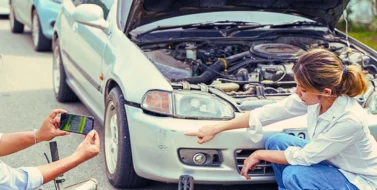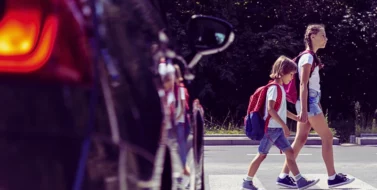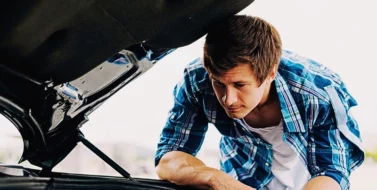What seems like a routine fender-bender can quickly transform to a life-altering tragedy, as pedestrians become vulnerable targets in the aftermath of motor vehicle accidents. The scenes of car crashes are inherently unpredictable, with drivers and passengers moving about, traffic continuing to flow, and emotions running high. Consequently, secondary pedestrian accidents may occur, and can leave people with serious or fatal injuries.

After a two-vehicle crash on I-294, a pedestrian was hit and killed by a third vehicle. The pedestrian had exited a disabled car after the first collision. The third vehicle, a tractor-trailer, also hit the disabled car.
Getting injured in a secondary pedestrian accident, or losing a loved one in such a wreck, can place a heavy financial weight on victims and their families. However, options exist. To discuss your right to pursue compensation after suffering an injury or losing a family member in a secondary pedestrian accident, call our Chicago car accident attorney at Lloyd Miller Law, for a FREE initial consultation at 773-838-8100.
Table of Contents
What Is a Secondary Pedestrian Accident?
Secondary accidents happen when pedestrians are struck by vehicles while reacting to initial incidents on the road. In 2022, the Illinois Department of Transportation reported 3,869 pedestrian accidents across the state, a number of which may have occurred after initial wrecks.
After a collision, the immediate impulse for many is to get out of their cars and check the damage. Out of instinct, drivers may check for injuries, exchange insurance information, or attempt to move their vehicles to safer locations. However, these seemingly reasonable actions may put everyone at risk, especially if located on a busy road or in an area with high-speed traffic. Due to the confusion, shock, and adrenaline of the moment, judgment may be clouded and pedestrians may end up in dangerous environments where they are unexpected exposed to additional traffic threats.
What Are Common Causes of Secondary Pedestrian Accidents?
Numerous factors contribute to secondary pedestrian accidents. The moments following a collision can be stunning for many. In the confusion that follows accidents, those involved may be at risk for secondary pedestrian accidents. Common causes of such accidents include:
Distracted Driving
Distraction is one of the primary causes of secondary pedestrian accidents. When drivers are preoccupied with activities such as texting, talking on the phone, or adjusting the radio, their attention is diverted from the road. Consequent to this reduced awareness, they may have delayed reactions, or completely disregard pedestrian safety.
Speeding
Excessive speed increases the risk of secondary pedestrian accidents. When a vehicle is traveling at high speeds, it takes longer to stop, and the impact force in a collision may be much greater. Consequently, pedestrians may suffer catastrophic or even fatal injuries.
Failure to Yield
After a crash, pedestrians who have exited their vehicles may be confused and distracted. Drivers who fail to yield the right-of-way to pedestrians pose a threat. Such reckless behavior may force pedestrians to react quickly to avoid oncoming traffic.
Impaired Driving
Driving under the influence of alcohol or drugs impairs a driver’s judgment, coordination, and reaction time. Impaired drivers may be more likely to make poor decisions, such as speeding, running red lights, or failing to yield, increasing the likelihood of causing secondary pedestrian accidents. An experienced Illinois personal injury lawyer can help victims injured in such accidents answer the question: “Can you sue a drunk driver?”.
Illinois Laws and Regulations
Illinois has specific laws and regulations designed to protect pedestrians. These include right-of-way laws, which require drivers to yield to pedestrians at crosswalks and intersections, and Scott’s Law.
Scott’s Law
Scott’s Law requires motorists to slow down, drive with caution, and move to another lane or reduce speed as they approach vehicles displaying flashing warning lights. The law was named in honor of a member of the Chicago Fire Department who was hit by a car and killed while helping at a crash.
It was noted that the driver of the tractor-trailer did not move over or stop, as is required by Scott’s Law. The driver could face a fine of up to $10,000, as well as be held financially liable for the pedestrian’s death due to having violated the law.
Liability in Secondary Pedestrian Accidents
The liable parties can vary, and responsibility can be shared in secondary pedestrian accidents. Unlike straightforward motor vehicle collision claims, secondary pedestrian impacts often involve questions of responsibility, which dedicated Chicago bicycle and pedestrian accident attorneys may help victims and their families to understand.
Due to the multi-stage nature of such impacts, the potential liable parties may include the driver of the vehicle that caused the initial crash, the driver who struck the pedestrian in the second impact, or multiple parties, depending on the circumstances. To determine liability, factors that are considered include the actions of the driver who caused the initial accident, the actions of the driver who caused the secondary impact, and the actions of the pedestrian.
Compensation Available to Victims
Illinois law provides several avenues for compensation in secondary pedestrian accident cases. Those injured may pursue damages through personal injury claims. The average car accident settlements in Illinois may include economic damages, such as medical expenses, rehabilitation costs, and lost wages. Non-economic damages, like pain and suffering, emotional distress, and loss of quality of life, may also be included.
Under certain circumstances, punitive damages may be awarded in secondary pedestrian accident cases. Unlike other damages, these do not seek to make victims whole for losses they sustained. Rather, the court may decide to award them in cases as punishment for the liable parties, and a deterrent to others who might engage in similar activities.
Proving Negligence in Secondary Pedestrian Accident Cases
Victims must establish the defendants acted negligently to successfully recover damages in secondary pedestrian accident cases in Illinois. Proving negligence involves establishing four critical elements – duty of care, breach of duty, causation, and damages. As such, evidence introduced by victims and their Chicago car accident attorneys will aim to demonstrate that the at-fault parties failed to exercise reasonable care under the circumstances, causing harm with actual economic and non-economic losses.
To help establish the elements of negligence, key evidence may include driver cell phone records, witness testimony, vehicle computer data, traffic camera footage, and expert analysis of vehicle speeds and stopping distances. A successful case will carefully demonstrate the driver should have anticipated and avoided the risk to pedestrians in the accident zone.
In the recent accident case that occurred on I-294, the deceased pedestrian’s family may point to the driver’s violation of Scott’s Law if they choose to pursue legal action.
Illinois’ Comparative Negligence Law
Illinois follows a comparative negligence rule, which may play a crucial role in victims’ ability to recover damages in secondary pedestrian accident cases. Under the state law, victims can pursue compensation, provided they are found to be less than 50% responsible for the accident. Their recoverable damages would, however, be reduced proportionally based on their percentage of fault.
To determine percentages of fault, a judge or jury will consider a variety of factors, including the pedestrian’s visibility, location, movement after the initial crash, and other contributory actions that increased the crash risk.
Common Injuries in Secondary Pedestrian Accidents
Lacking the exterior protection of a vehicle, the injuries suffered in secondary pedestrian accidents can often be serious, with lasting or fatal effects. Common types of car accident injuries that pedestrians may suffer include:
Fractures
Broken bones are a common injury in secondary pedestrian accidents. The impact of a vehicle can cause fractures in the legs, arms, pelvis, or ribs.
Spinal Cord Injuries
Spinal cord injuries can result in paralysis, loss of sensation, and other debilitating conditions. These types of injuries can occur when the force of the impact damages the spinal cord.
Internal Injuries
Internal injuries, such as organ damage, internal bleeding, and ruptured organs, can be life-threatening. Such injuries are common due to the force and impact of secondary pedestrian accidents. They may not be immediately apparent, and can often require immediate medical attention.
Traumatic Brain Injuries
Traumatic brain injuries are a leading cause of disability and death in secondary pedestrian accidents. They may result from direct impact to the head or from jolting of the brain within the skull. TBIs can cause a range of symptoms, including cognitive impairment, emotional disturbances, and physical disabilities, that may affect victims’ day-to-day lives.
Steps to Take After a Crash to Avoid Secondary Pedestrian Accidents
The actions you take in the moments after a motor vehicle accident in Chicago can have serious, lasting implications. While it is important to address the initial collision, it is also essential to take steps to avoid secondary pedestrian accidents. Some steps you should take to avoid involvement in a subsequent crash include:
Moving to a Safe Location
If possible, you should move your vehicle and yourself to a safe location after a crash. Moving to the shoulder of the road or a nearby parking lot ensures you do not leave the scene, but also helps reduce your risk of getting hit by another vehicle.
Staying Visible
Staying visible may seem an afterthought, but can help avoid serious secondary pedestrian accidents. Therefore, you should turn on your hazard lights to alert other drivers to the situation. If it’s dark, use reflective triangles to make your vehicle more visible. If you have to get out of your vehicle, you should put on some type of reflective clothing.
Avoiding Standing in Traffic Lanes
While checking for injuries and property damage, thinking of where they are standing is not always the top thought on accident victims’ minds. However, after a car accident, you should take care to ensure you do not step out or stand in the lanes of traffic. Doing so puts you at risk of getting hit by another car.
Warning Other Drivers
Some secondary pedestrian accidents occur because drivers come upon crash scenes with little or no time to react to avoid them. If you are able, you should do what you can to warn oncoming traffic about the accident. You may use hand signals or warning triangles to help alert other drivers to slow or move over.
Contacting Emergency Services
If you get into a motor vehicle collision, call emergency services to report the accident and request assistance. You should provide them with the location of the accident, as well as the extent of any injuries.
Not Distracting Yourself with Phones
Cell phones allow you to immediately reach out for help after a car accident, but they can also be a major distraction. Therefore, you should avoid using your phone to call or text, outside of making the necessary calls. When you do need to use your phone, be sure that you are out of the way, and focus on ensuring your safety and the safety of others.
Following Traffic Laws and Signals
If you are able to move your vehicle, do so carefully, making sure to follow all traffic laws and signals. Uninvolved drivers may not anticipate happening upon an accident scene. They will, however, expect other motorists to be adhering to the traffic laws and signals. As such, avoiding erratic or unexpected movements, then, can help prevent some serious secondary accidents.
Waiting for Professional Help
For safety and legal purposes, it’s important that you stay at the scene of an accident until emergency responders arrive. Even if you feel okay, you should remain at the scene and speak with the authorities.
Getting into a motor vehicle accident, even a minor one, can leave people stunned, upset, and confused. The actions they take in the moments after a crash, however, can not only make a difference in their ability to recover compensation, but also can have life and death consequences. At Lloyd Miller Law, we have more than 50 years of experience helping people like you recover compensation for injury-associated losses, as well as for losses resulting from the death of a loved one. For a FREE consultation in Chicago, Illinois, call us today at 773-838-8100.





